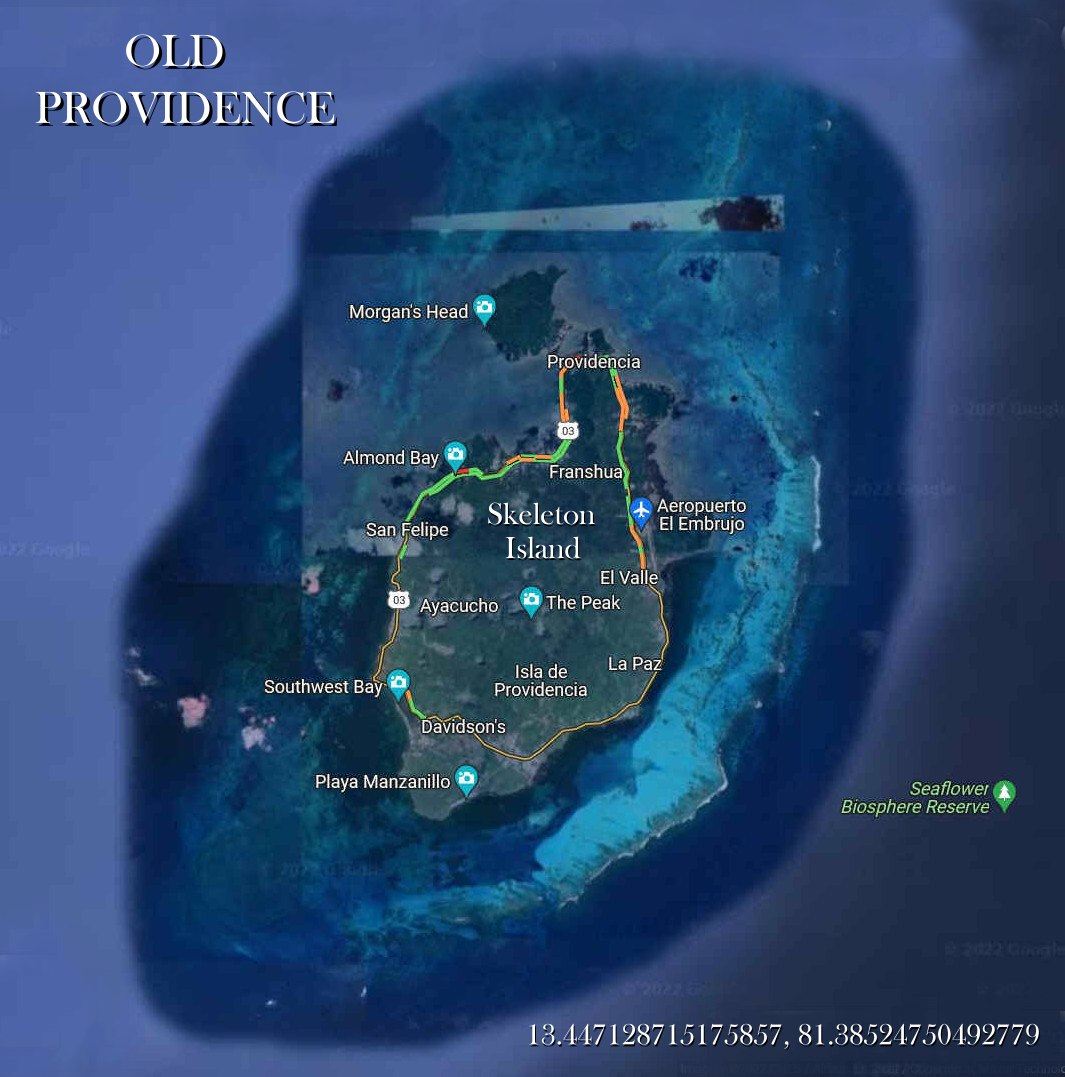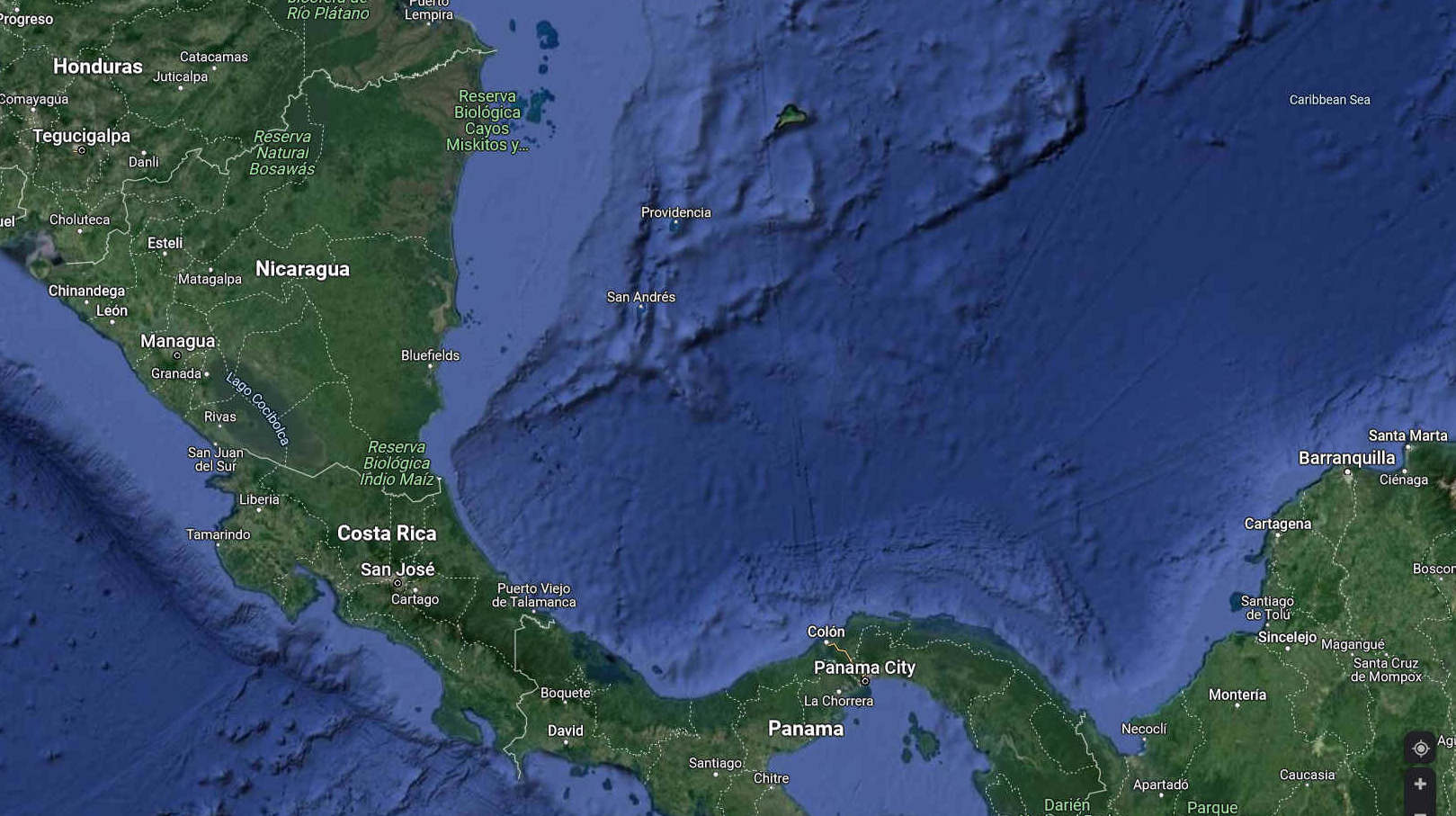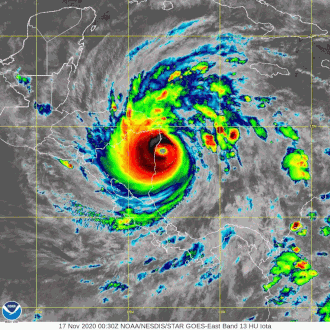|
HURRICANES IOTA & ETA
Please use our INDEX to navigate this site or return HOME
|
|
|
|
ISLA DE PROVIDENCIA - was subjected to two category 4 hurricanes in 2020
HURRICANE ETA
Hurricane Eta was a deadly and erratic Category 4 hurricane that devastated parts of Central America in early November 2020. The record-tying twenty-eighth named storm, thirteenth hurricane, and sixth major hurricane of the extremely-active 2020 Atlantic hurricane season, Eta originated from a vigorous tropical wave in the eastern Caribbean Sea on October 31. The system rapidly organized as it progressed west, with the cyclone ultimately becoming a Category 4 hurricane on November 3. With a peak intensity of 150 mph (240 km/h) and 922 mbar (hPa; 27.23 inHg), it was the third most intense November Atlantic hurricane on record, behind the 1932 Cuba hurricane and Hurricane Iota, the latter of which formed just two weeks later. Some weakening took place as the system made landfall near Puerto Cabezas, Nicaragua, late that same day. Eta rapidly weakened to a tropical depression and briefly degenerated to a remnant low as it meandered across Central America for two days, before regenerating into a tropical depression and moving north over water. The storm later reorganized over the
Caribbean as it accelerated toward Cuba on November 7, making a second landfall on the next day. Over the next five days, the system moved erratically, making a third landfall in the Florida Keys, on November 9, before slowing down and making a counterclockwise loop in the southern Gulf of Mexico, just off the coast of
Cuba, with the storm's intensity fluctuating along the way. After briefly regaining hurricane strength on November 11, the system weakened back to a tropical storm once more, before making a fourth landfall on Florida on the next day, and proceeding to accelerate northeastward. Eta subsequently became extratropical on November 13, before dissipating off the coast of the Eastern United States on the next day.
HURRICANE IOTA
Hurricane Iota was a devastating late-season Category 4 Atlantic hurricane which caused severe damage to areas of Central America already devastated by Hurricane Eta just less than two weeks prior. The 31st and final tropical cyclone, 30th named storm, 14th hurricane, and record-tying seventh major hurricane of the record-breaking 2020 Atlantic hurricane season, Iota originated as a tropical wave that moved into the Eastern
Caribbean on November 10. Over the next few days, the wave began to become better organized and by November 13, it developed into a tropical depression north of Colombia. The depression strengthened into Tropical Storm Iota six hours later. The storm was initially impacted by some wind shear, but a center relocation and relaxed shear allowed Iota to quickly strengthen into a hurricane on November 15, after which it underwent explosive intensification, peaking as a high-end Category 4 storm, with wind speeds of 155 mph (250 km/h). After weakening slightly, Iota made landfall in northeastern Nicaragua as a mid-range Category 4 hurricane, becoming the strongest recorded hurricane to make landfall in Nicaragua in November. Iota then rapidly weakened as it moved inland, dissipating on November 18.
CENTRAL AMERICA - Nicaragua, Costa Rica, Mexico and Columbia were all battered by Hurricanes Eta and Iota.
WIPE OUT
2020
On November 15–16th 2020, Iota passed close to the outlying Archipelago of San Andrés, Providencia and Santa Catalina as a high-end Category 4 hurricane. The center of the hurricane's eye missed Providencia by 11 miles (18 km), but the storm still made a direct hit (rather than a landfall) on the island, causing damage described as "unprecedented" by President Iván Duque Márquez. Communication was lost with the island on November 16, lasting for over 20 hours. An estimated 98–99 percent of structures on the island were damaged or destroyed, including buildings constructed in the 15th century.
Every home on the island suffered damage, with 80 percent being destroyed. One person was killed and six were injured on the island. Two shelters were known to have lost their roof before communication was lost. The situation on the island was difficult to ascertain as of November 17, though the island's hospital was assumed destroyed or rendered inoperable. Although debris covered runways at El Embrujo Airport, initially preventing aircraft from arriving or leaving, by November 17 it was operational enough to allow President Duque to visit and assess the damage of the island.
Hurricane graphic - NOAA
|
|
Please use our INDEX to navigate this site or return HOME
This website is Copyright © 2022 Cleaner Ocean Foundation & Jameson Hunter - All rights reserved
|


